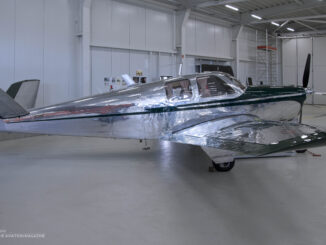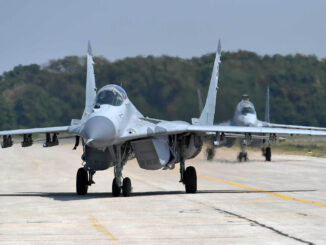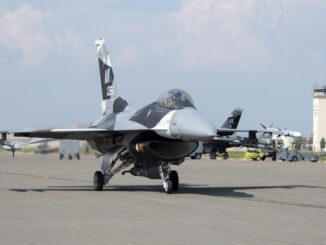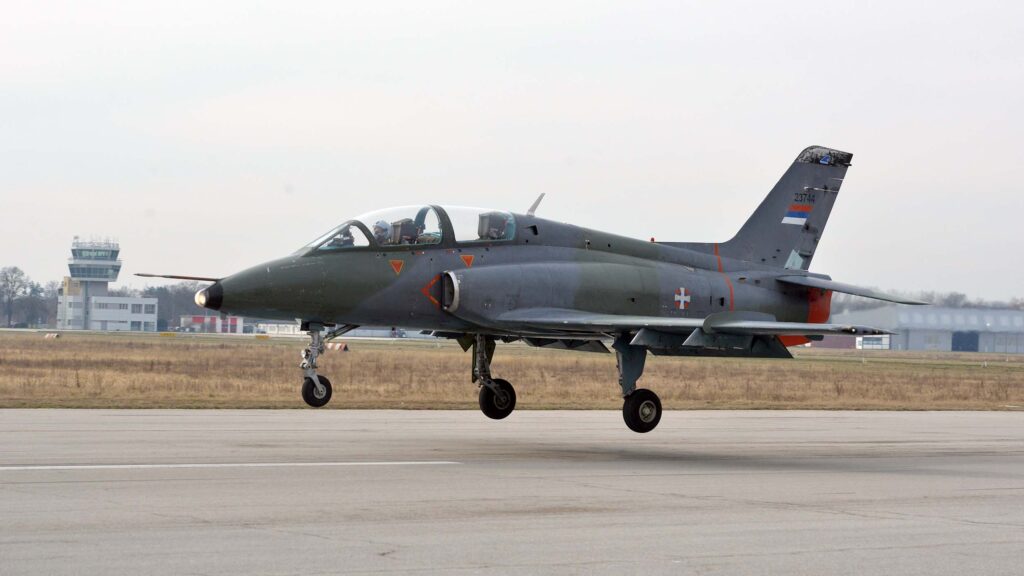 One of the latest press releases of the Serbian Ministry of Defence, focused on flight training performed by cadet pilots at Batajnica air base, have created the perfect opportunity to get a closer look at SOKO G-4 Super Galeb aircraft, an advanced jet trainer developed in the former Yugoslavia.
One of the latest press releases of the Serbian Ministry of Defence, focused on flight training performed by cadet pilots at Batajnica air base, have created the perfect opportunity to get a closer look at SOKO G-4 Super Galeb aircraft, an advanced jet trainer developed in the former Yugoslavia.
The abovementioned training was held at ´Colonel pilot Milenko Pavlović´ base, home of the 204th Air Brigade of the Serbian Air Force and Air Defence (Ратно ваздухопловство и противваздухопловна одбрана Војске Србије). The flights were performed by fifth-year cadets of the Military Academy, under a supervision of flight instructors of the 252nd Training Squadron.
Flying the Super Galeb aircraft is the final stage of the young pilots´ training programme. Before they were allowed to fly the G-4, the cadets had to complete the basic course on Lasta 95 (English: barn swallow) propeller-driven aeroplane and then master the theory of flight operations with the Super Galeb.
That final stage of the pilots´ course is aimed for introducing some advanced aviation skills, such as aerobatics, flying in formation, aerial navigation and IFR flights. After completing the last phase of their training, the cadets are ready to fly the G-4 independently, as well as allowed to make a further step in their career and fly more advanced aircraft from the Serbian Air Force inventory.
The G-4 Super Galeb (English: super seagull) advanced jet trainer was developed in the late 1970s in former Yugoslavia. The aeroplane was designed as a replacement of G-2 Galeb trainer that entered its operational service back in the early 1960s. Although the new aircraft shared the name and engine – Rolls-Royce Viper turbojet – with its predecessor, the Super Galeb was not an upgrade of the G-2, but a completely new development.

On 17th July 1978, the first prototype of the G-4 performed its maiden flight. It seemed that the aircraft would meet all the air force requirements and an order for six pre-production aircraft followed. The aeroplanes from that initial batch were delivered starting from the end of 1980 and allowed to complete a series of further tests and evaluation flights. Following their successful completion, the Super Galeb was approved for serial production. In 1983, the new trainer officially entered its operational service.
The Super Galeb was designed to serve as both jet trainer and light attack aircraft. It can cover a full scale of jet aircraft pilot course, from a basic syllabus to advanced aspects of training. All aircraft of that type are equipped with Martin-Baker ejection seats, an avionics that allow them to fly in adverse weather conditions and hard points that can be used for external fuel tanks, armament or reconnaissance pods. A various combat equipment of both Western and Eastern origin can be used, including a twin-barrel GSh-23L cannon mounted under the fuselage or AGM-65 Maverick air-to-ground missiles.
A total of approximately 85 Super Galeb aircraft was made. Although the aeroplane entered a few international competitions for training jets, including the Joint Primary Aircraft Training System of the USAF and US Navy, the Yugoslav Air Force was practically the sole operator of that aircraft – apart from six examples acquired by the Myanmar Air Force in 1991. After the breakup of Yugoslavia, some of the G-4s from the former inventory of the Yugoslav Air Force were taken over by Montenegro and Bosnia and Herzegovina air forces.
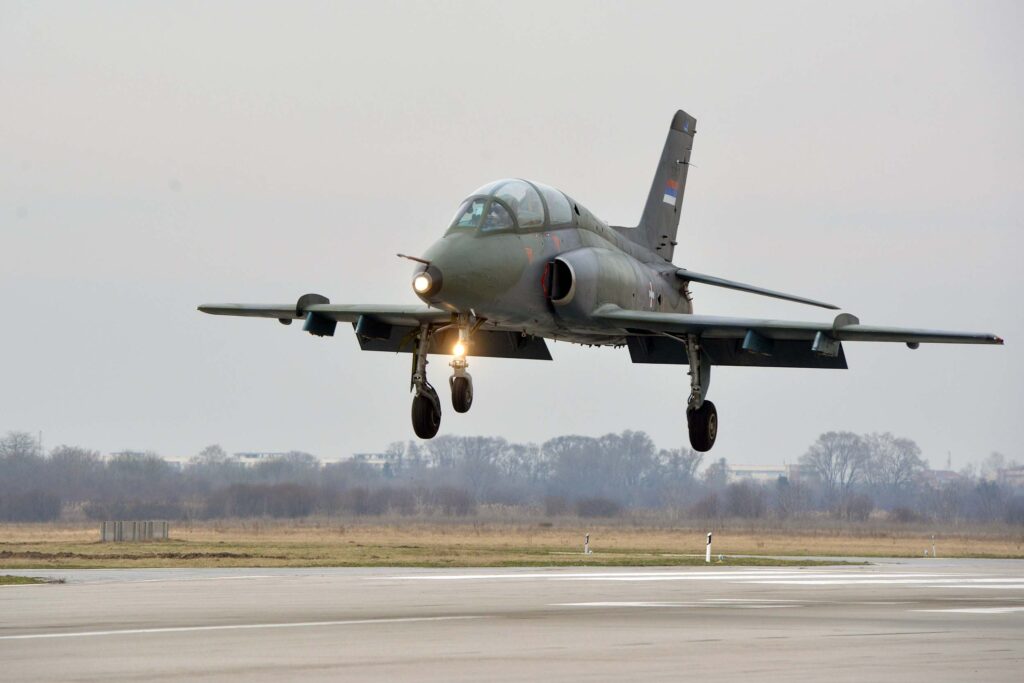
The G-4 jets of the Yugoslav Air Force took part in combat operations during the Yugoslav Wars of the 1990s. At least three of them were reportedly shot down, several others were destroyed on the ground.
An interesting fact is that there was also an official aerobatic display team of the Yugoslav Air Force, flying the G-4 Super Galeb aircraft. The team, named Leteće zvezde / Летеће звезде (English: flying stars), was active from 1985 until 2000. Initially, the Flying Stars flew SOKO J-21 aircraft but since 1990 the group switched to the Super Galebs. Regrettably, all seven aircraft of the team were destroyed on the ground at Podgorica air base, during the Yugoslav Wars. That fact, together with crisis years that Serbian armed forces suffered after the war, led to dissolution of the team in 2000.
The Super Galeb jets still being a part of the Serbian Air Force inventory were a subject of two modernizations. The first of them, designated G-4M (modernized) was launched yet in 1999 and the upgraded aircraft was ready in 2002, featuring new avionics with HUD and multi-function displays, modernized hard points for additional equipment and enhanced flight characteristics.
The further upgrade is called G-4MD (modernized digital) and include LCD screens, new mission computer, GPS navigation systems, new identification and communication suite and integration of new guided weapons. That current upgrade programme should extend the operational life of Super Galeb aircraft within the Serbian Air Force until the year 2035.
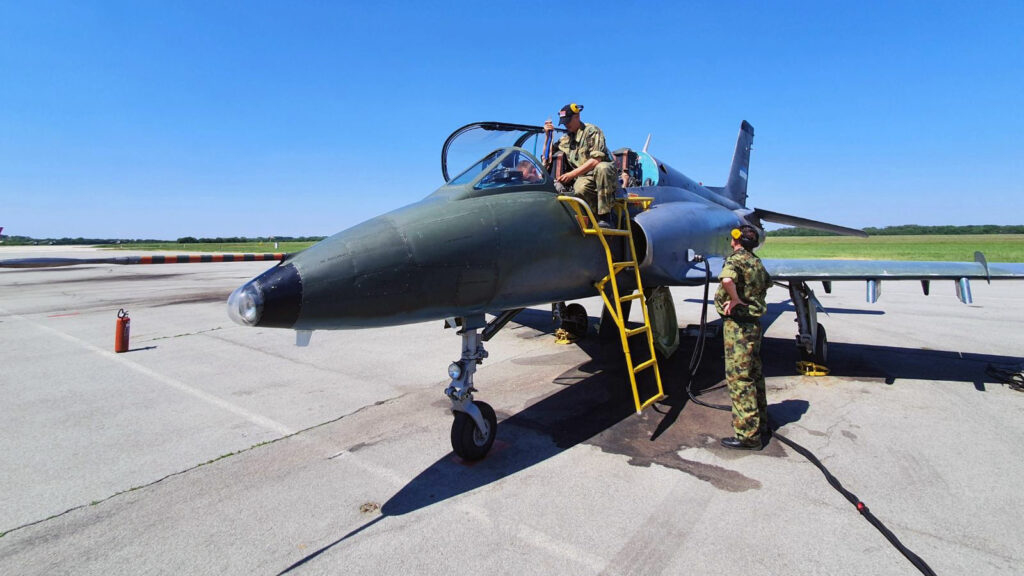
All photos © Министарство одбране Републике Србије / MoD Republic of Serbia. MoD press releases were used. Cover photo – SOKO G-4 Supergaleb (2021), © MoD Republic of Serbia.

